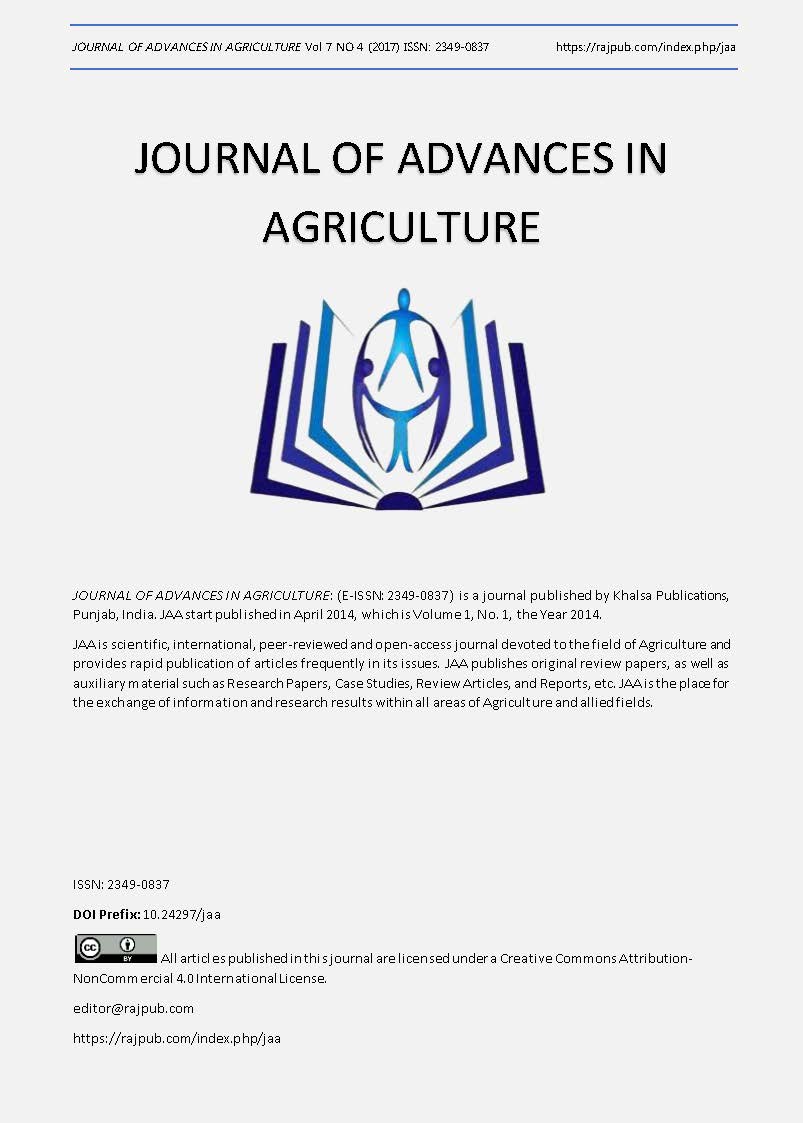EVALUATION OF SELECTED INSECTICIDES AGAINST WHITEFLY (Bemisia tabaci) ON BRINJAL CROPS AND THEIR EFFECT ON NATURAL ENEMIES
DOI:
https://doi.org/10.24297/jaa.v7i4.6356Keywords:
Brinjal; Insecticides; Whitefly; Spider; EfficacyAbstract
A field study was carried out for two cropping periods in the first season in year 2014 and the second season in 2015. This study was carried out at share farm, Agrotechnology Plantation UiTM Melaka, Campus Jasin to examine the efficacy of selected insecticides against whitefly (Bemisia tabaci) on brinjal crops and the effect on natural enemies (Spider) under field conditions. Five treatments with four replications were applied. The treatments were T0= Control (water), T1= Imidacloprid (Confidor), T2= Acetamiprid (Mospilan), T3= Dinotefuran (Oshin) and T4= Cyantraniliprole (Benevia). Pre-treatment and post-treatment observation were recorded which is one day before application and 1, 3, 7 and 14 days after application of insecticides. A total of two applications of treatments were done. The results revealed that Imidacloprid was recorded as the most effective and the highest reduction of whiteflies during the first season with 96.73%, followed by Acetamiprid (92.44%), Cyantraniliprole (82.65%) and Dinotefuran (80.74%) while during the second season, Imidacloprid also was recorded as the highest reduction with 79.99%, followed by Acetamiprid (76.34%), Cyantraniliprole (54.09%) and Dinotefuran (36.87%). Overall, chemical control of Imidacloprid was the most effective against whiteflies populations in brinjal particularly in the first season as compared to second season. The effect of these selected insecticides on natural enemies (Spider) revealed that chemical control of Imidacloprid gave the highest reduction of spider with 65.69%), followed by Cyantraniliprole (64.47%), Acetamiprid (41.44%) and Dinotefuran (15.45%). Imidacloprid and Cyantraniliprole were classified as moderately harmful to spider while Acetamiprid and Dinotefuran were classified as harmless or slightly harmful.
Downloads
Downloads
Published
How to Cite
Issue
Section
License
 All articles published in Journal of Advances in Linguistics are licensed under a Creative Commons Attribution 4.0 International License.
All articles published in Journal of Advances in Linguistics are licensed under a Creative Commons Attribution 4.0 International License.




